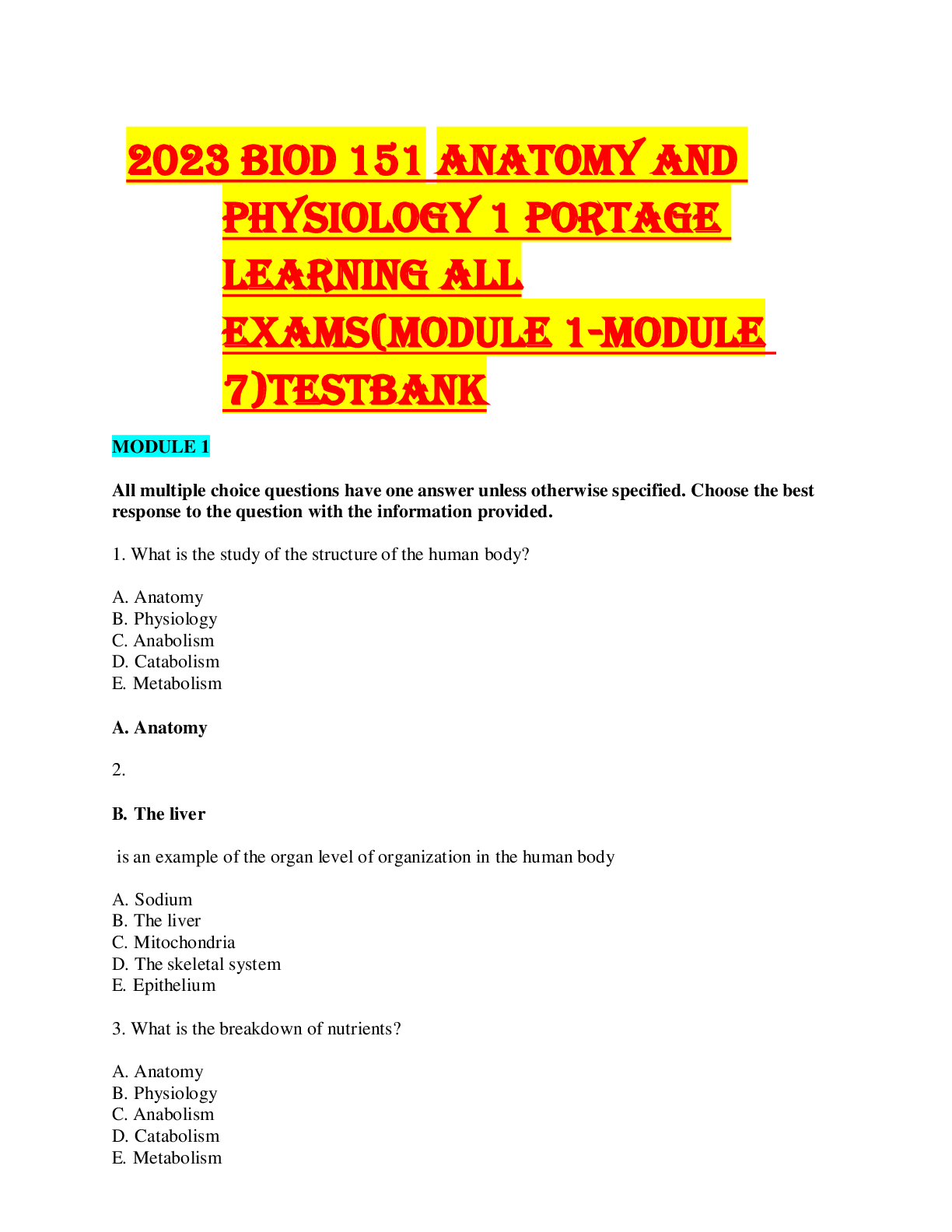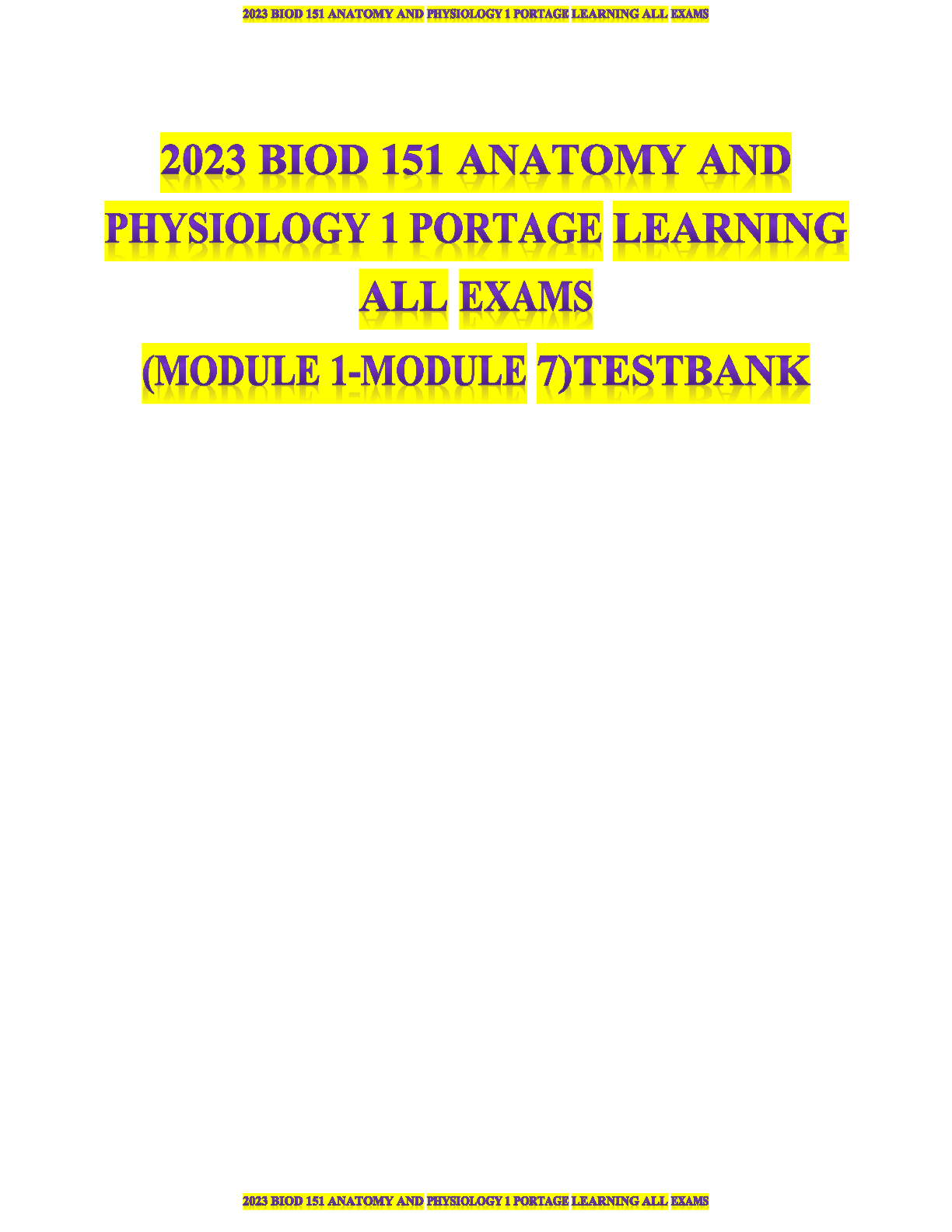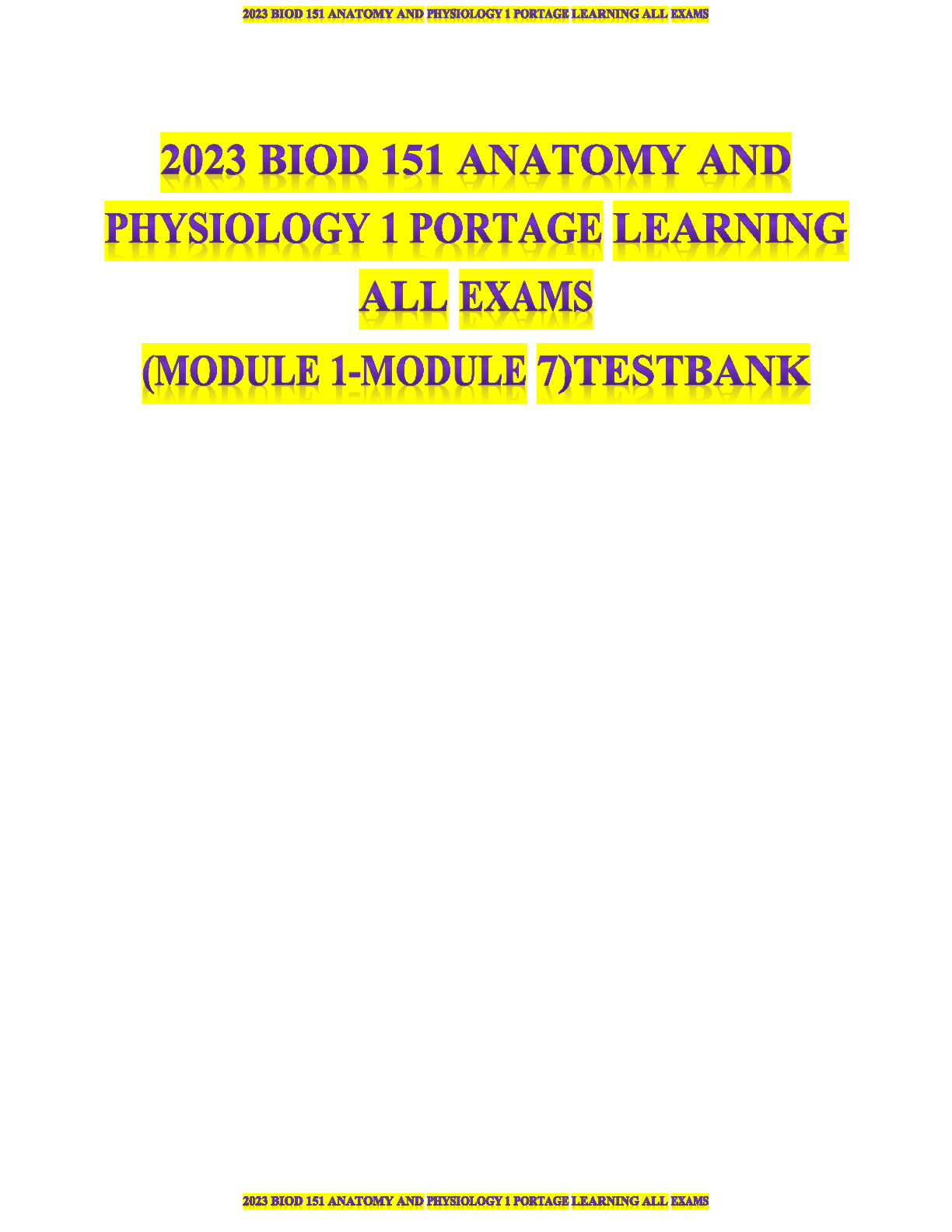Health Care > EXAM > BIOD 171 PORTAGE LEARNING ALL EXAMS (All)
BIOD 171 PORTAGE LEARNING ALL EXAMS
Document Content and Description Below
Exam 1. True or False: A virus is considered a microorganism. False. Viruses are not living and as such are not considered microorganisms. Viruses can, however, be classified as microbes, a more ge... neral term that includes microorganisms and viruses. 2. What is the smallest biological unit of life? A cell. 3. At a generalized level, all cells are comprised of what? Macromolecules* *A student may also answer: Proteins, Lipids, Nucleic acids and Polysaccharides but they must answer with all four to be fully correct. How many different types of amino acids are available from which to make proteins? 20 2. Define an essential amino acid. An essential amino acid cannot be produced by the human body and as such must be take in from the environment through alternative sources (i.e) food. Exam Page 3 1. What are the two major types of nucleic acids and their roles? DNA (deoxyribonucleic acid): Contains the genetic material as well as heredity characteristics found in living organisms. RNA (ribonucleic acid): its role is for decoding the sequence of heredity information found in DNA Answer Key 1. What are the two major types of nucleic acids and their roles? There are two major types of nucleic acids: DNA (deoxyribonucleic acid) and RNA (ribonucleic acid). Nucleic acids are chemical molecules that carry genetic information within BIOD 171 ALL EXAMS the cell. DNA contains a vast amount of hereditary information and is responsible for the inheritable characteristics of living organisms. RNA is responsible for deciphering the hereditary information in DNA and using it to synthesize proteins. Exam Page 4 Answer Key 1. Complete the following RNA strand and indicate how many bonds are formed for each complementary pair: 3’ GGUCAUCG 5’ 5’ CC AGC 3’ 3’ GGUCAUCG 5’ 5’ CCAGUAGC 3’ There are 2 bonds formed between A and U, and 3 bonds between G and C. Exam Page 5 Answer Key 1. The plasma membrane (select all that are true): A. Only restricts movement of materials into the cell B. Is often a bilayer comprised of lipids C. Cannot prevent essential nutrients from escaping D. Contains hydrophobic tails pointing inward B and D 2. Carbon, Hydrogen and Oxygen atoms come together to form what primary macromolecule? Give an example. Polysaccharides. Glucose, sucrose and cellulose are all acceptable answers. Exam Page 6 Answer Key 1. True of False: Eukaryotic cells do not have a nucleus False. Eukaryotic cells do have a nucleus (prokaryotic c [Show More]
Last updated: 2 years ago
Preview 1 out of 34 pages
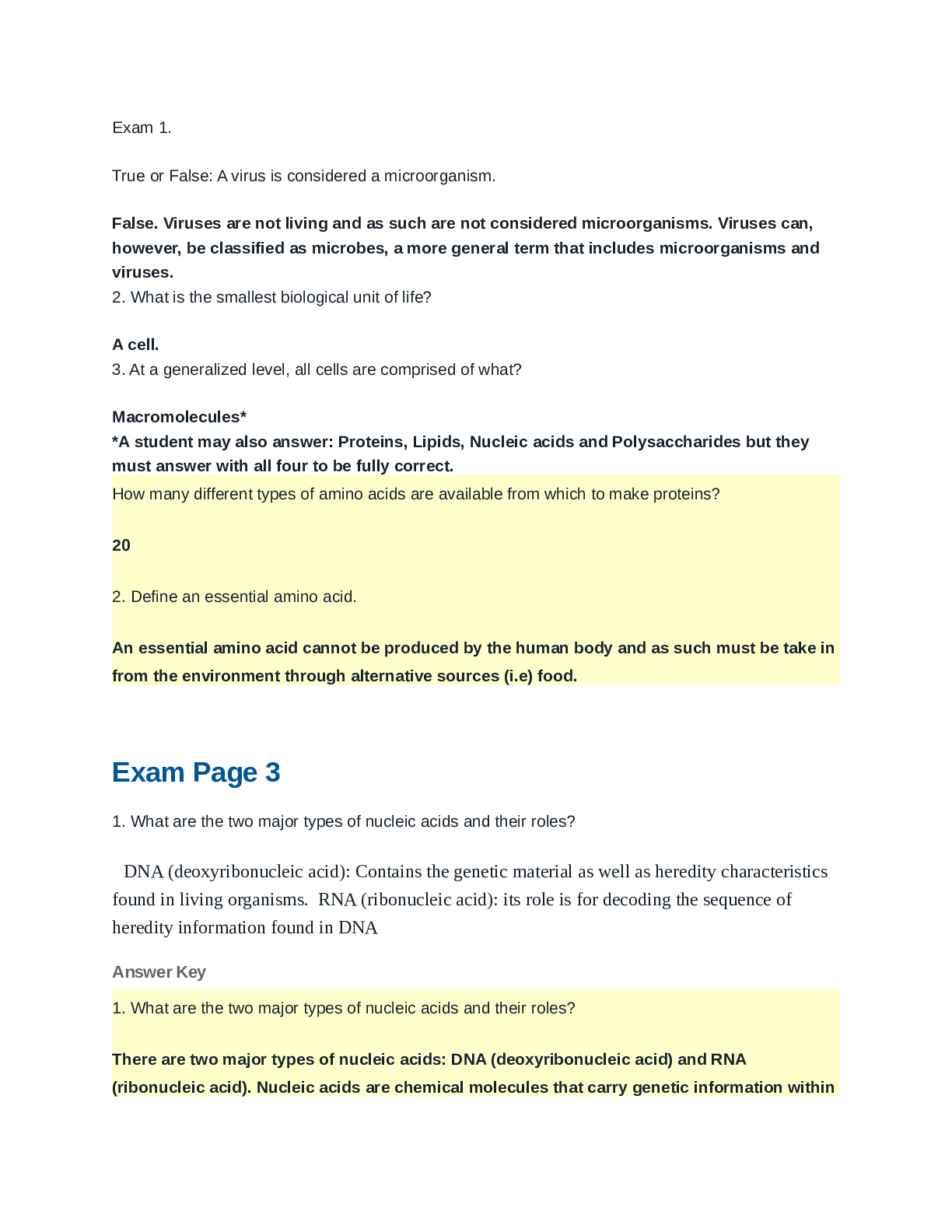
Buy this document to get the full access instantly
Instant Download Access after purchase
Buy NowInstant download
We Accept:

Reviews( 0 )
$14.00
Can't find what you want? Try our AI powered Search
Document information
Connected school, study & course
About the document
Uploaded On
Jul 07, 2022
Number of pages
34
Written in
Additional information
This document has been written for:
Uploaded
Jul 07, 2022
Downloads
0
Views
74

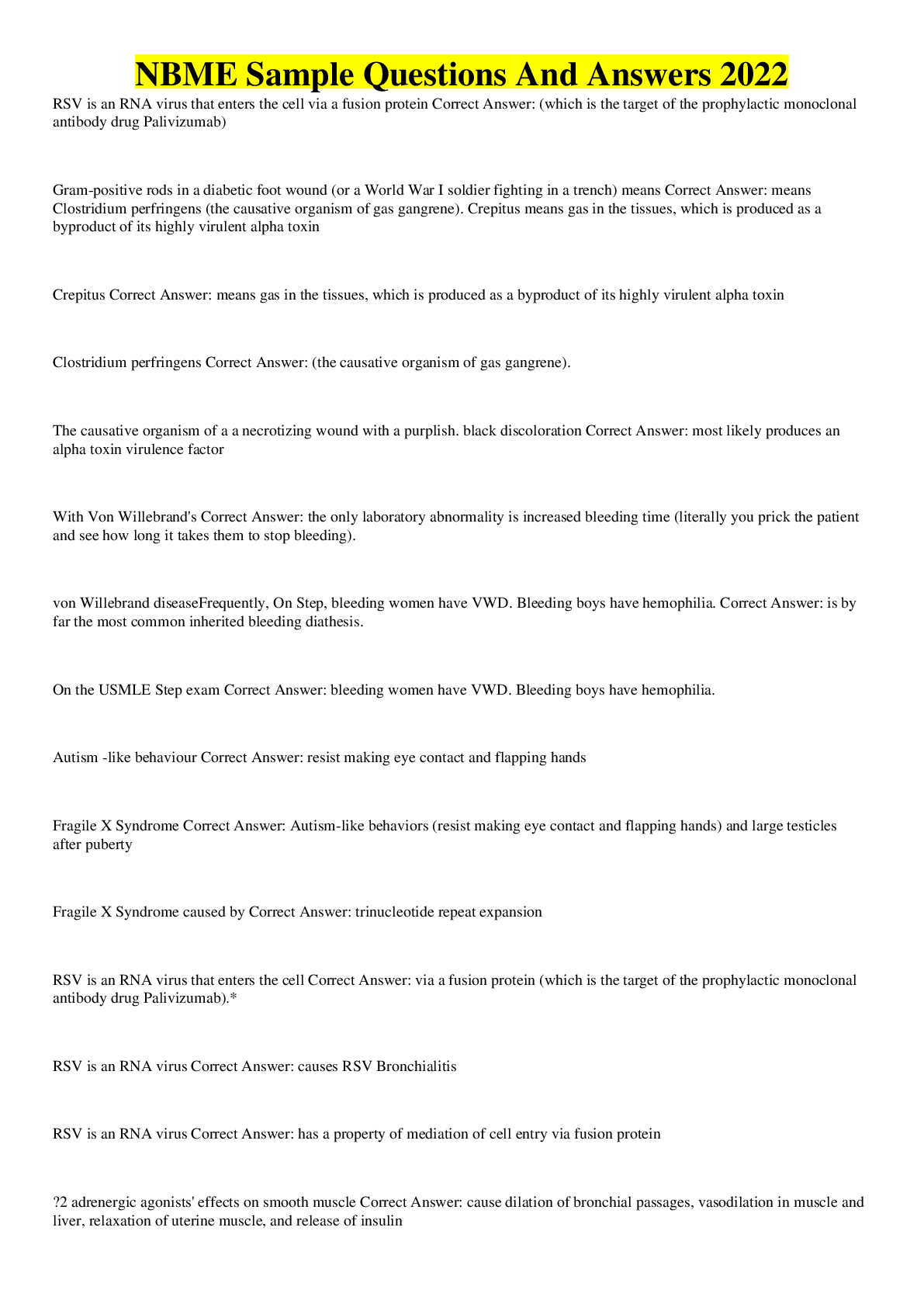










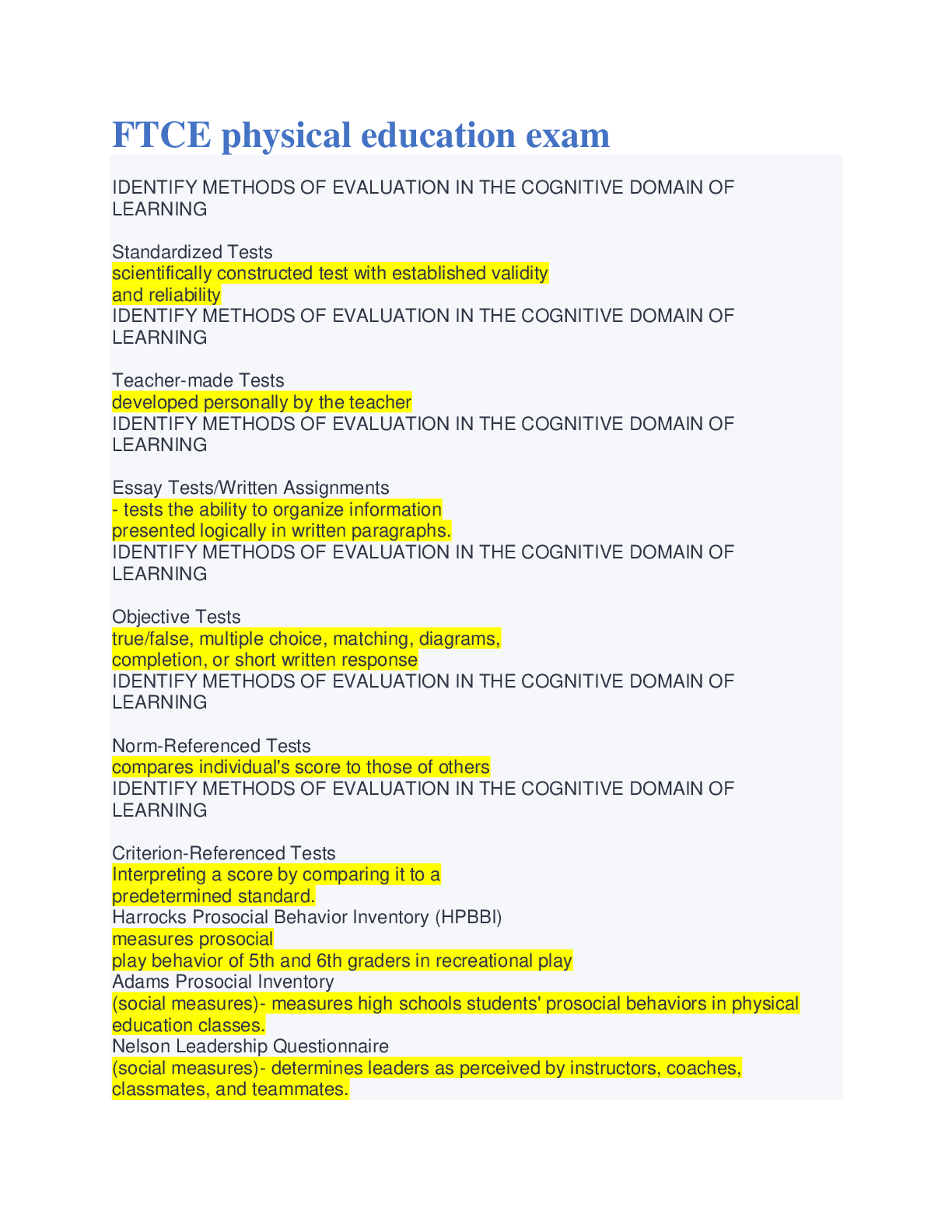

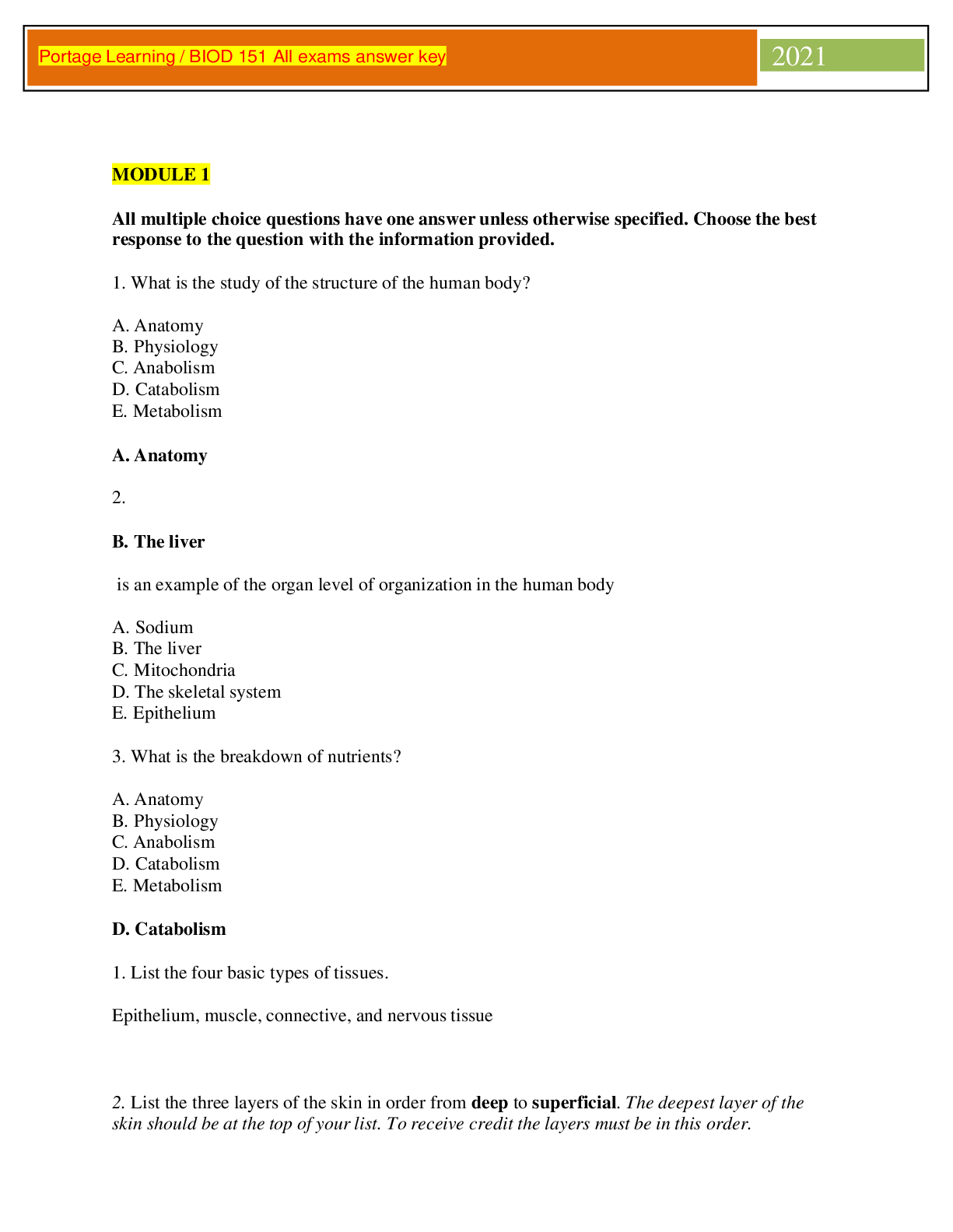
 Exams Questions and Answers NEW 2023.png)
